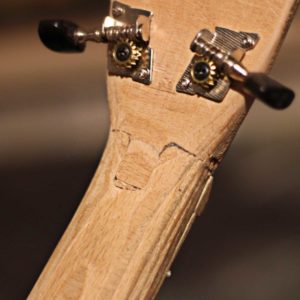The guitar head gives a lot of space for creativity. Depending on the tuning pegs, the tools available and your own preferences, there are various design options. But before creating crazy head forms, here are some things to consider:
- The size depends just on the amount of tuners and how you arrange them. The only thing you should take care of, is that your hand doesn’t touch the first tuner, while grabbing chords. Simulate G7 on Uke or D7 on Guitar. If they fit, the rest should be fine as well.
- The angle, between head and neck. This can be important to pull the strings down to the nut, depending on the nut form and the tuner’s orientation. Otherwise, a snaring sound can occur.
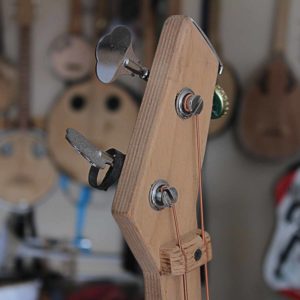
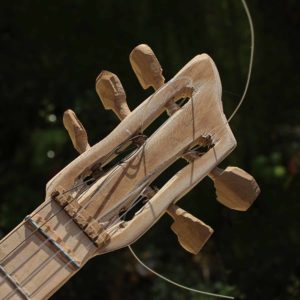
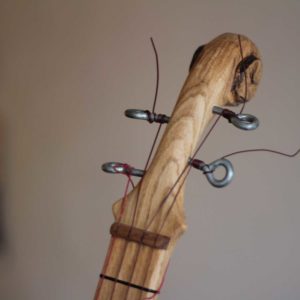
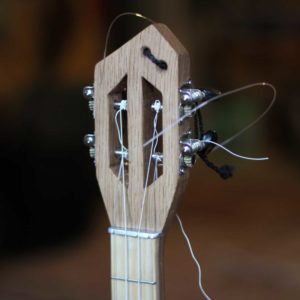
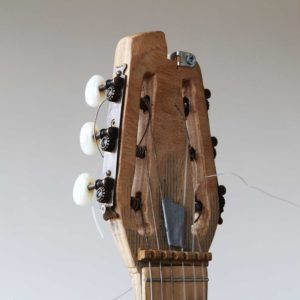
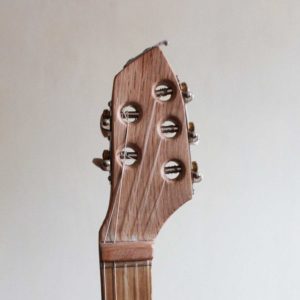
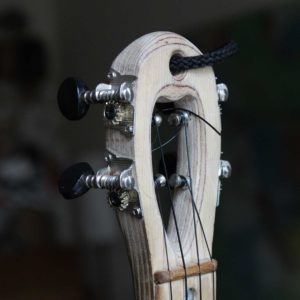
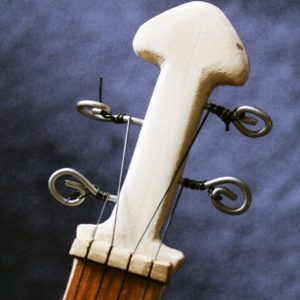
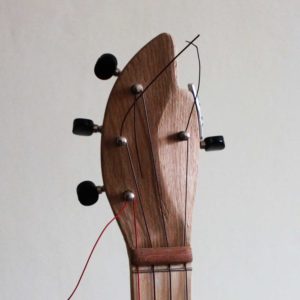
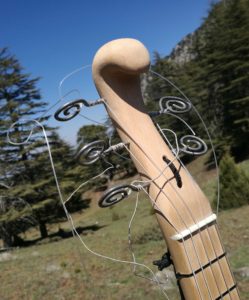
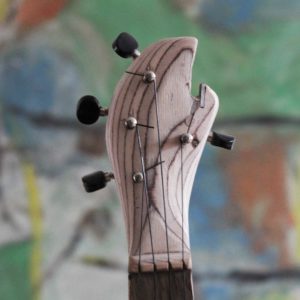
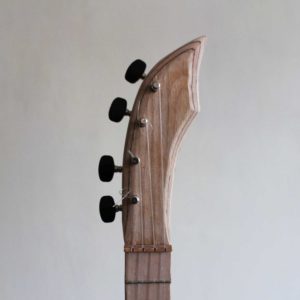
Straight head, tuners up
Head and neck are made from one and the same piece of wood.
- Very stable, as there is no potentially weak gluing point (still good gluing can be stronger than the wood itself..)
- No extra work to connect the head
- Maybe not enough pressure from the strings to the nut. If this is the case, an inverted nut could solve the problem. (check the section about nuts)
Streight head, tuners sideways
Head and neck are made again from one and the same piece of wood, but in this case, the tuners come in from the side.
- As the tuners sit a little lower, compared to the up facing orientation, the string’s tension on the nut is better.
- Might be decently more advanced to build, as you need to work a bit more precisely with the inner hole.
tenon connection head
Good old tenon connection… With this you can achieve the classical angled head style look, even do I never saw this used in any ‚professional‘ guitar.
- The string’s pressure on the nut is guaranteed.
- You integrate a weak spot. Although none of my instruments ever broke…
- Precise work is needed. But compared to other head connection options, it can be done with easy tools like a normal saw and a chisel.
